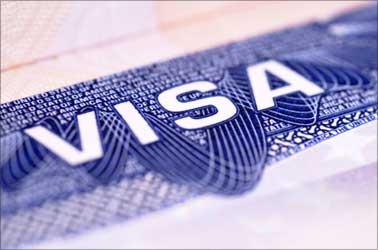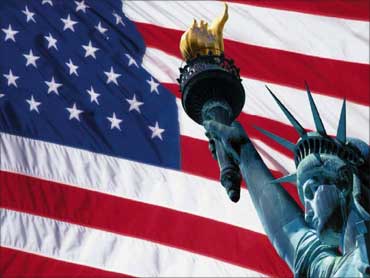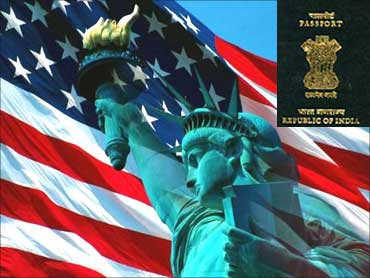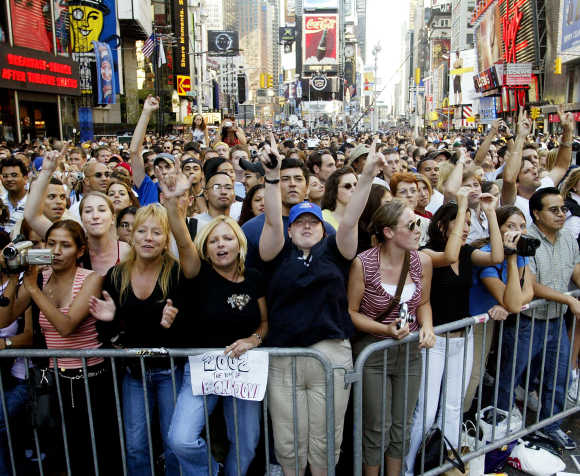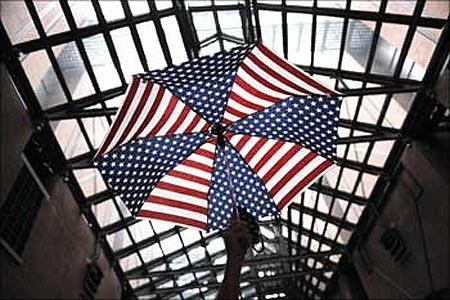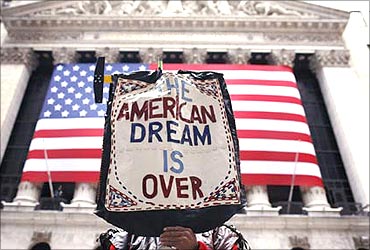 | « Back to article | Print this article |
New York has the highest demand of H1-B visas
The New York metropolitan area has the highest demand of H1-B visas, followed by Los Angeles, San Francisco, San Jose and Washington, a new report on geographical distribution of this most sought after work visas has revealed.
"The New York metropolitan area had by far the highest demand for H1-Bs: almost 53,000 on average over the 2010-2011 period, accounting for more than 16 per cent of national demand," the Brookings Institute said in its report on H1-B visas, which was released on Wednesday.
Click NEXT to read further. . .
New York has the highest demand of H1-B visas
"Los Angeles, San Francisco, San Jose and Washington made up the remaining top five metro areas, each with between 14,000 and 18,000 requests.
"Together, the top nine metro areas accounted for half of all requests nationwide; these metro areas are also among the largest by total population," the report said.
The Brookings Institute said the demand for H1-B workers, however, is not limited to large metropolitan areas.
Durham in North Carolina, with just over 500,000 total population in 2010, ranked 20th for total H-1B requests despite ranking 102nd for total population.
Click NEXT to read further. . .
New York has the highest demand of H1-B visas
Likewise, Trenton in New Jersey, which ranks 138th for total population, ranked 29th for H-1B demand.
In all, 22 metropolitan areas that do not rank among the 100 largest in the US ranked among the top 106 for H1-B demand (See Appendix B for data on 106 metropolitan areas).
In these and other metropolitan areas, H1-B demand intensity, calculated as the ratio of H-1Bs requested to the total number of jobs in the metro area, is high.
Click NEXT to read further. . .
New York has the highest demand of H1-B visas
The San Jose metro area -- home of Silicon Valley -- ranks highest at 17. 10 requests per 1,000 workers compared to 2.40 for the nation.
The next three highest intensity metro areas -- Columbus, Indian, Durham, North Carolina, and Trenton, New Jersey.
In its report the Brookings said the 100 highest requesting employers in 2010-2011 account for 20 per cent of national demand.
Two-thirds of these employers are head quartered in the United States, and their LCAs account for 60 per cent of requests from these 100 employers.
Click NEXT to read further. . .
New York has the highest demand of H1-B visas
Twenty-seven of these employers were classified as Fortune 500 in 2011, and those requests make up one-third of this group.
The employers requesting the most H1-Bs are large private companies specialising in information technology, consulting, and electronics manufacturing.
The top 25 employers requesting H1-B workers account for 12 per cent of all applications and are composed of an even mix of American and non-American companies.
"The US companies range from technology firms such as Microsoft, Intel, Oracle, and Google, to financial services companies such as JPMorgan Chase and Goldman Sachs, to consulting firms such as Cognizant.
Click NEXT to read further. . .
New York has the highest demand of H1-B visas
"Deloitte and IBM are heavily involved in providing IT professional services and one of America's largest retail pharmacies, CVS, is also among the top 25 H-1B requesters," it said.
"The other half of H1-B requests by the top 25 employers come from companies headquartered outside the United States These include companies like Tata, Wipro, Accenture, and IBM India, which provide IT professional and technical services to American companies," the report said noting that the Japanese company Fujitsu produces both computer hardware and also provides IT professional services.
Click NEXT to read further. . .
New York has the highest demand of H1-B visas
"Requests for H1-Bs by uncapped institutions accounted for about 10 per cent of all applications in 2010-2011.
The top uncapped employers are the nation's largest research institutions and universities from across the country, including the University of Michigan, the University of Texas at Austin, the National Institutes of Health, and the Johns Hopkins University," it said.
According to the Brookings Institute, in recent years, due to the nature of demand for high-skilled workers, visa holders have clustered in STEM (science, technology, engineering and maths) fields and come mostly from countries in Asia.
According to the US Department of Homeland Security's most recent report, India had the highest number of H1-B recipients in 2011, comprising 58 per cent of all approved petitions.
Those born in China received 8.8 per cent, followed by Canada at 3.5 per cent.
